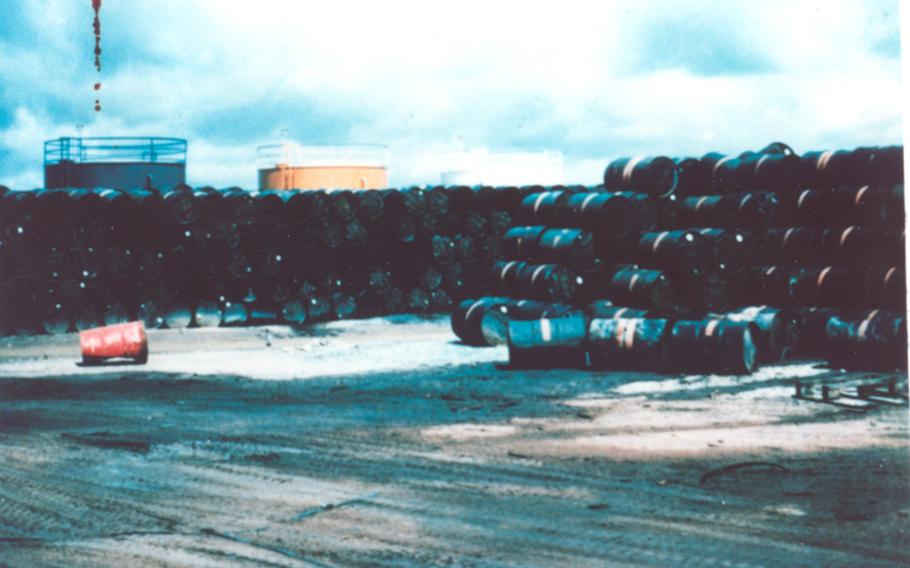Asia-Pacific
Okinawan mayor urges probe into Agent Orange allegations
Stars and Stripes August 19, 2011

Large stacks of 55-gallon drums filled with Agent Orange. (U.S. Army file photo)
CAMP FOSTER, Okinawa — A local mayor is urging the Japanese government to investigate whether the U.S. buried dozens of barrels of Agent Orange during the Vietnam War at a former U.S. base that was returned to the town three decades ago.
Chatan Mayor Masaharu Noguni said he has urged the Ministry of Foreign Affairs and the Okinawa governor’s office to conduct a new environmental survey of the former Hamby Airfield after recent media reports claimed the toxic defoliant was buried there.
Earlier this week, the Japan Times ran a front-page story in which an unnamed U.S. veteran said he helped bury the Agent Orange at Hamby in the late 1960s. Other Vietnam veterans also said they handled the defoliant while stationed on Okinawa, according to the paper.
It was the second time this summer that the U.S. military in Asia has been accused of burying Agent Orange on its bases. Three Vietnam veterans claimed they buried it on Camp Carroll in South Korea, but so far joint testing by the U.S. and South Korea has found no trace.
U.S. Forces Japan officials said Friday that Agent Orange was never used or stored on Okinawa.
“Following a recent inquiry from the government of Japan, DOD has once again searched and once again found no record of the storage or use of Herbicide Orange in Okinawa, Herbicide Orange being sent to Okinawa, or that the aircraft or ships transporting Herbicide Orange to South Vietnam stopped at Okinawa on their way,” Maj. Neil Fisher, spokesman for USFJ, said in an email.
Fisher said the U.S. military first investigated claims in 2007 that the defoliant had been on Okinawa.
The former Hamby Airfield, near Camp Foster and Camp Lester, has been densely developed since it was returned to the Japanese government.
Japan’s Ministry of Defense said it has found no evidence of the toxic substance.
“There was no report of discovery of toxic substances from Hamby Airfield through the restoration work after the facility was returned from the military in 1981,” according to a spokesman for Okinawa Defense Bureau of Ministry of Defense, which is responsible for restoring former U.S. military land.
In 2002, the Japanese government did uncover 215 barrels of an unknown substance from a construction site on the former airfield land and testing was done by the Okinawa prefectural government.
“The results indicated no toxic substances,” said Naoki Oshiro, a chef engineer of the prefectural government’s environmental engineering department. “They were tar-like substances and the levels of PCBs, cadmium and lead was no higher than those found in nature.”
Meanwhile, in the same area, various toxic substances including arsenic, asbestos, lead and hexavalent chromium have been uncovered since 2003 from a section of Camp Lester that was recently returned to Japan, Oshiro said. None of those chemicals appear to be linked to Agent Orange, he said.
Despite the denials by both the U.S. and Japanese governments, allegations that the defoliant was buried in the area have caused alarm, the Chatan mayor said.
“I was stunned,” Noguni said. “But when you see what had happened on Camp Lester, it is something that is very highly likely.”
Japan Foreign Affairs Minister Takeaki Matsumoto said earlier this month that he has asked the U.S. government for an explanation following the media report on Agent Orange, but the ministry has not said what information it was given or how it will respond.